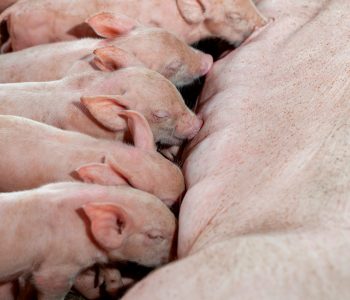Milk is a source of nutrients and easily digestible bioactive factors. Its composition varies according to the requirements of the newborn. Experiencing changes from colostrum to transitional and mature milk.
Milk represents the only source of nutrients and bioactive factors for the piglet and there are marked changes in its composition throughout lactation.
These changes reflect both the metabolic activity of the mammary gland as well as species-specific developmental requirements of newborns.
During gestation and around the time of delivery, the mammary gland undergoes structural and functional changes that prepare the organ for milk synthesis and secretion.
The endocrine environment of pregnancy initiates and drives structural changes in the gland and the progressive differentiation of milk-producing lactocytes.
Lactocyte-secreting differentiation encompasses the first stage of lactogenesis and results in the accumulation of colostrum in the gland.
This first stage of lactogenesis is characterized by low levels of milk protein and lactose synthesis. While there is an active transport of immunoglobulin G (IgG) molecules through lactocytes.
Therefore, newborn piglets depend on colostrum intake for thermogenesis and the establishment of passive immunity.
| Colostrum is usually available to the piglet the first 24 hours after birth, which is the period of time where newborns can absorb IgG. |
The second phase of lactogenesis begins 24 to 36 h after delivery and is characterized by secretory activation of lactocytes.
[register]
Secretory activation is hormonally driven and initiated by a drop in progesterone levels and a concomitant increase in prolactin and glucocorticoid levels, which occurs around the time of birth.
These peripartum hormonal changes stimulate:
- the closure of tight bonds between lactocytes,
- the cessation of paracellular transport,
- and the start of abundant milk synthesis.
The ability for de novo fatty acid synthesis in lactocytes and an increased capacity for lactose synthesis are major markers of secretory activation. Therefore, these tend to indicate the initiation of the milk transition phase.
The growth rate of piglets is higher in the first postnatal week than at any other time after birth. Compared to 4-week-old piglets, at one week of age, piglets exhibited increased protein synthesis capacity in skeletal muscle and other organs in response to feeding.
It is believed that the high energy content of transitional milk, defined between 34 hours and 9 days after calving, is necessary to support this period of accelerated growth. With the transitional milk production period, there is a decrease in protein synthesis capacity along with gradual changes in milk composition.
It is considered that the period of synthesis of mature milk in pigs begins around 10 days after calving and continues until weaning.
Compared to previous stages, macronutrient concentrations in mature milk remain stable during lactation….
Follow the link below for full article…
Source:
You may also like: “L-arginine supplementation in pregnant sows.”
[/register]
